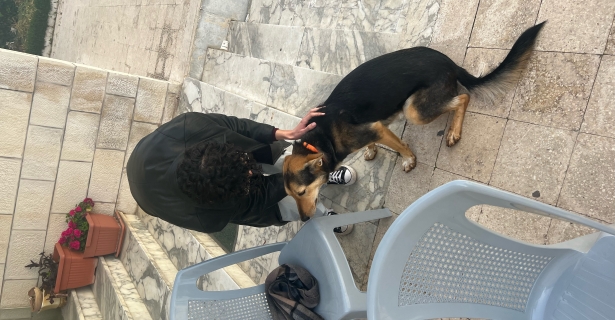The Hashemite Kingdom is an ethnically diverse state largely composed of two main identity groups: “indigenous” Jordanians and “foreign” Palestinians. Many say the country is majority Palestinian at this point and the capital city, Amman, is a clear center of Palestinian life and culture.
These divisions of “indigenous” versus “foreign” and Palestinian-Jordanian versus Jordanian-Jordanian are widely contested based on a number of factors ranging from fundamental pillars of state, common identity as Greater Syria under the Ottomans, and resistance against Israeli occupation and erasure of Palestinian life. These undercurrent tensions between nationality, identity, and citizenship are what I hope to illuminate in my research. My Friday beginning in Amman and ending in the desert of southern Jordan was a perfect embodiment of these complex dynamics.
The drizzly morning began with an interview with an accomplished academic of east bank origin who explained in rigorous detail the origins of Jordanian and Palestinian national identity. He expressed emotional dedication to the Palestinian cause and cited ideas of Arab unity, but as our conversation progressed, certain subsurface rifts emerged. Fascinatingly to me, the university professor noted how was glad that “we” East Bank “real” Jordanians controlled the military and that he didn’t want “them,” meaning Palestinians, to take over the entire government/state. This sensitive but present rift between nationalities and belonging under one common citizenship represents a fragile conception of state that an invented post-colonial Jordan must reckon with constantly.
After a delicious lunch of shawarma and baklawa, and slightly better weather, I had the opportunity to meet with the leader of a cultural center that engages with the wider history and traditions of the “Sham” region but focuses on preservation of a distinctly Palestinian heritage. As we sat in the sun with her dog, the young Palestinian woman explained an almost opposite understanding of Jordan. After asking to be off the record for this delicate portion of the interview, she described the rifts between the two groups as contrived and spoke of a Jordan for “indigenous” Jordanians as well as for its large Palestinian population in a shared mission of culture as resistance. Her work sought to avoid contentious political difference and focused on Arab and Sham unity instead.
These two interviews set the identity landscape of Amman as we vacated the big city and headed south towards the Jordanian desert. There, we were hosted by tribal Bedouins who also have a special place in Jordanian national myth as the group who welcomed in the Hashemites as their monarch. Therefore, they enjoy specific privileges and preservation within the discourse of who is reallyJordanian.
Overall, my Friday in Jordan clarified my sense that each narrow identity group has a distinct and important relationship with the state, regime, and royal family. This day was a microcosm of my curiosity to understand how each presence fits together to attain the functionally stable but foundationally insecure modern kingdom.

